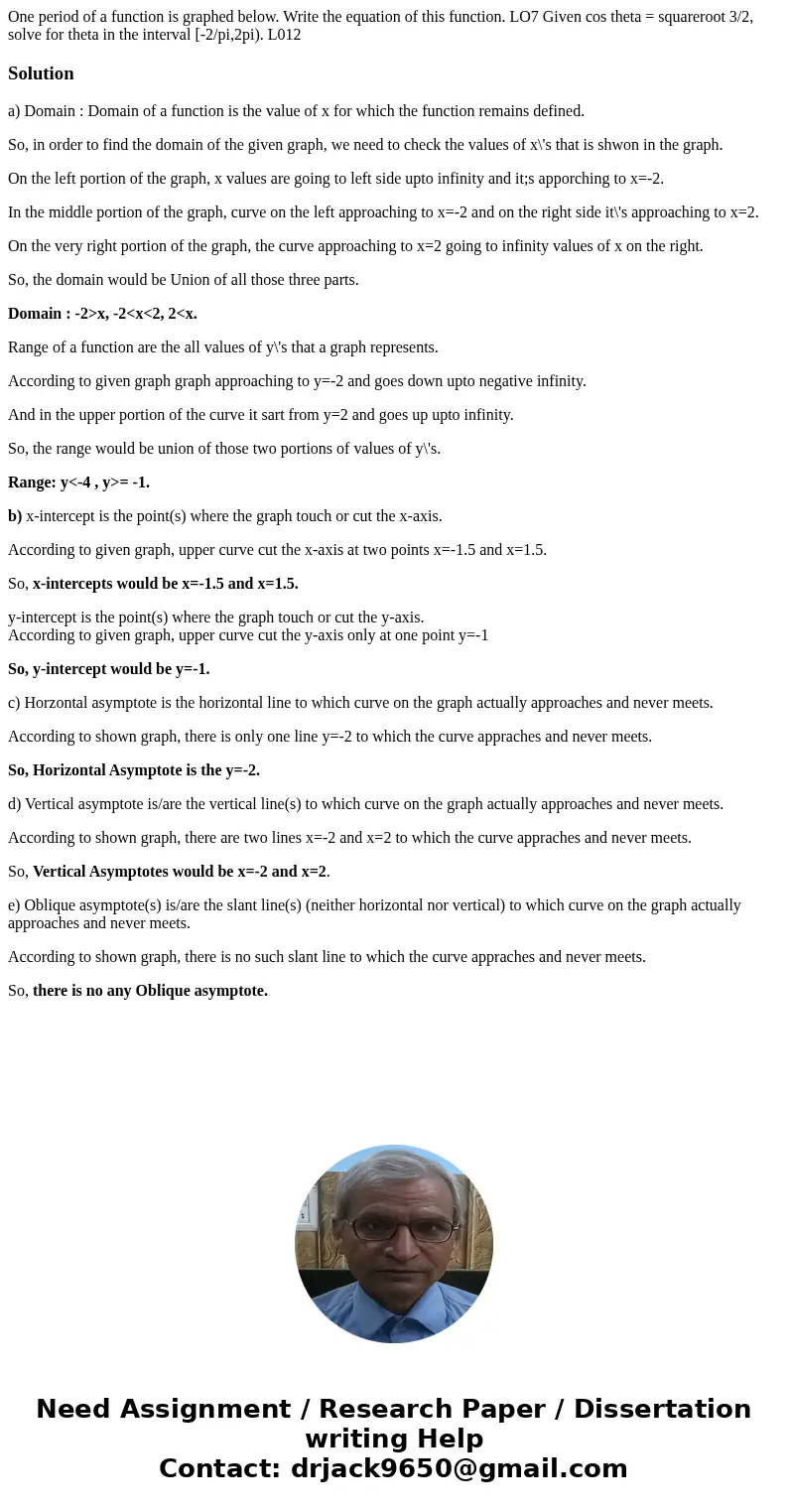One period of a function is graphed below Write the equation
Solution
a) Domain : Domain of a function is the value of x for which the function remains defined.
So, in order to find the domain of the given graph, we need to check the values of x\'s that is shwon in the graph.
On the left portion of the graph, x values are going to left side upto infinity and it;s apporching to x=-2.
In the middle portion of the graph, curve on the left approaching to x=-2 and on the right side it\'s approaching to x=2.
On the very right portion of the graph, the curve approaching to x=2 going to infinity values of x on the right.
So, the domain would be Union of all those three parts.
Domain : -2>x, -2<x<2, 2<x.
Range of a function are the all values of y\'s that a graph represents.
According to given graph graph approaching to y=-2 and goes down upto negative infinity.
And in the upper portion of the curve it sart from y=2 and goes up upto infinity.
So, the range would be union of those two portions of values of y\'s.
Range: y<-4 , y>= -1.
b) x-intercept is the point(s) where the graph touch or cut the x-axis.
According to given graph, upper curve cut the x-axis at two points x=-1.5 and x=1.5.
So, x-intercepts would be x=-1.5 and x=1.5.
y-intercept is the point(s) where the graph touch or cut the y-axis.
According to given graph, upper curve cut the y-axis only at one point y=-1
So, y-intercept would be y=-1.
c) Horzontal asymptote is the horizontal line to which curve on the graph actually approaches and never meets.
According to shown graph, there is only one line y=-2 to which the curve appraches and never meets.
So, Horizontal Asymptote is the y=-2.
d) Vertical asymptote is/are the vertical line(s) to which curve on the graph actually approaches and never meets.
According to shown graph, there are two lines x=-2 and x=2 to which the curve appraches and never meets.
So, Vertical Asymptotes would be x=-2 and x=2.
e) Oblique asymptote(s) is/are the slant line(s) (neither horizontal nor vertical) to which curve on the graph actually approaches and never meets.
According to shown graph, there is no such slant line to which the curve appraches and never meets.
So, there is no any Oblique asymptote.

 Homework Sourse
Homework Sourse